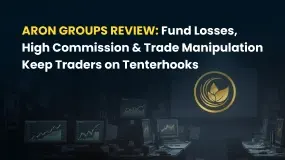简体中文
繁體中文
English
Pусский
日本語
ภาษาไทย
Tiếng Việt
Bahasa Indonesia
Español
हिन्दी
Filippiiniläinen
Français
Deutsch
Português
Türkçe
한국어
العربية
Analysis-Growth slowdown fears temper bullishness on commodity currencies
Abstract:After huge rallies fed by blockbuster commodity price surges, the tide may be turning for currencies such as the Aussie dollar and Colombian peso as fears of a global growth slowdown take hold in markets.

As inflation and higher borrowing costs crimp business and consumer spending, the International Monetary Fund and World Bank this week slashed global growth forecasts by nearly a percentage point and flagged the risk of further drops stemming from Chinas COVID lockdowns and sanctions on Russia.
The warnings knocked prices of oil and metals, though tight supply of most commodities has so far capped losses. Brent crude futures remain above $100 a barrel while the Refinitiv CRB commodity index is still up nearly a quarter this year.
Eight of the top 30 currency performers this year in a group monitored by Societe Generale are commodity-linked. In a smaller G10 grouping, four of the top five are from commodity exporting countries, Refinitiv data shows.
Societe Generale strategist Kenneth Broux reckons however, that the rally is “running on fumes” with a big test for commodity currencies coming from U.S. real yields – or inflation-adjusted 10-year Treasury yields – turning positive this week for the first time in two years.
Central banks are also polishing their hawkish credentials, especially the U.S. Federal Reserve.
A BofA investor survey this week predicted the Fed would hike rates more than seven times this year, up from four times in a March survey.
Anticipation of the resulting growth slowdown may be already taking the edge off commodities and commodity currencies such as the Australian dollar, which rose 10% versus the greenback between end-January and late-March.
The Brazilian real has gained 18% this year and the Colombian peso 8%.
“Long Latin American energy exporters and short Asian importers” has been this year‘s most concentrated foreign exchange trade, the head of a U.S. bank’s currency desk said.
April has brought a turnaround, however. The Chilean peso for example, has shed almost half its first-quarter gains as copper prices ease, while signs of a Chinese slowdown have weighed on the Aussie and Kiwi dollars.
Morgan Stanley‘s proprietary FX positioning tracker, calculated off client option market positions, reflects the shift, said James Lord, the bank’s global head of foreign exchange.
“Usually exchange rates tend to be very correlated and tend to go in the same direction, but we have seen a huge decoupling between commodity exporting and importing currencies since the start of the year,” Lord said.
On Morgan Stanleys scale of minus 100 to plus 100, where 0 is neutral, positioning on commodity currencies reached 75 in March, the highest according to data going back to 2014. The score has since eased, albeit to a still-bullish 62.
“Commodity exporters currencies may start to weaken from here because global growth is slowing,” Lord said, noting that extreme positioning means there were “a lot of flows that can go the other way”.
LOT OF OPTIMISM
The catalyst could be China.
The yuan, crucial to the trajectory of commodities, has fallen to a two-month low against a basket of currencies and a Reuters poll shows analysts are “short” yuan for the first time since October..
With swathes of China under COVID lockdowns, a gauge of hedge fund positioning compiled by the U.S. CFTC shows a sharp decline in Aussie dollar net longs – currently $2.1 billion versus six-year highs of about $6.5 billion in January.
Brazilian real net longs have held up better, though they too are off early Marchs record highs of nearly $1 billion. Hedge funds have also stopped buying the kiwi and the Canadian dollar, the data shows.
If growth does slows sharply, currencies‘ exalted valuations will be hard to justify – the Norwegian crown’s value on a trade-weighted basis is near its highest, relative to its median value, for the last 50 years.
The Aussie and Kiwi dollars are also well above historic averages on a trade-weighted basis, according to Refinitiv data.
Current exchange rates are pricing a lot of bullishness, said Francesca Fornasari, head of currency solutions at Insight Investment, noting for instance “when it comes to the Aussie, there is a lot of optimism baked in about China, commodity markets and the central bank rate trajectory.”

Disclaimer:
The views in this article only represent the author's personal views, and do not constitute investment advice on this platform. This platform does not guarantee the accuracy, completeness and timeliness of the information in the article, and will not be liable for any loss caused by the use of or reliance on the information in the article.
Read more

Aron Groups Review: Fund Losses, High Commission & Trade Manipulation Keep Traders on Tenterhooks
Have you lost your hard-earned capital while trading via Aron Groups Broker? Has the high commission charged by the broker substantially reduced your trading profits? Does the Marshall Islands-based forex broker constantly manipulate spreads to widen your capital losses? Have you been lured into trading courtesy of Aron Groups No Deposit Bonus, only to find that you had to deposit capital to get a bonus? All these and many more trading issues have become synonymous with the experience of Aron Groups’ traders. Consequently, many traders have shared negative Aron Groups reviews online. In this article, we have shared some of their reviews.

Uniglobe Markets Bonus Review: Understanding the Offers and Uncovering the Risks
Many traders start looking for a new broker by searching for special deals and bonuses. The phrase "Uniglobe Markets no deposit bonus" is something people often search for. Let's address this question clearly and directly. Based on all the information we have, Uniglobe Markets does not currently offer a no-deposit bonus. Instead, this broker focuses on bonuses that require you to deposit your own money first. To get any bonus credits, traders must put in their own capital. Read on to learn how this entire bonus works out for traders.

PINAKINE Broker India Review 2025: A Complete Guide to Safety and Services
As online trading grows in popularity, Indian traders are always looking for brokers that offer good deals and fair conditions. PINAKINE has become one of these companies, getting attention by promising high leverage and many different account options. This broker, officially called Pinakine Liquidity Limited, has been operating for about one to two years and has made many people curious. Traders want to know the answer to the most important question: Is PINAKINE a real and safe place to invest money, or are there hidden dangers behind its attractive offers? Read on to know the answer.

Trading Oscillators: The Secret Tool Every Trader Should Know
If you’ve ever looked at a trading chart and wondered how traders know when a price is “too high” or “too low,” the answer often lies in trading oscillators. A trading oscillator is a type of technical indicator that helps traders measure the momentum of price movements. In simple terms, it tells you when a currency pair, stock, or commodity might be overbought or oversold — which can signal a potential reversal.
WikiFX Broker
Latest News
Is Nash Markets Regulated or Risk? Truth About Nash Markets’ License & Withdrawal Issues
Webull Widens Crypto Futures with Coinbase Derivatives
Latest FCA Daily Alerts and Consumer Warnings for 2025
CySEC Blocks Certification Access to Combat Advisor Impersonation
Angel one 2025 Review & Complaints
Exclusive Markets Under the Scanner: Traders Report High Swap Charges, Deposit Discrepancies & More
Voices of the Golden Insight Award Jury - Simon So, Chief Experience Officer of Hantec Financial
PINAKINE Broker Review: A Complete Look at Its Services and Risks
Pinched By Penny Shortage, US Retailers Beg Congress To Step In
PINAKINE Broker India Review 2025: A Complete Guide to Safety and Services
Currency Calculator




